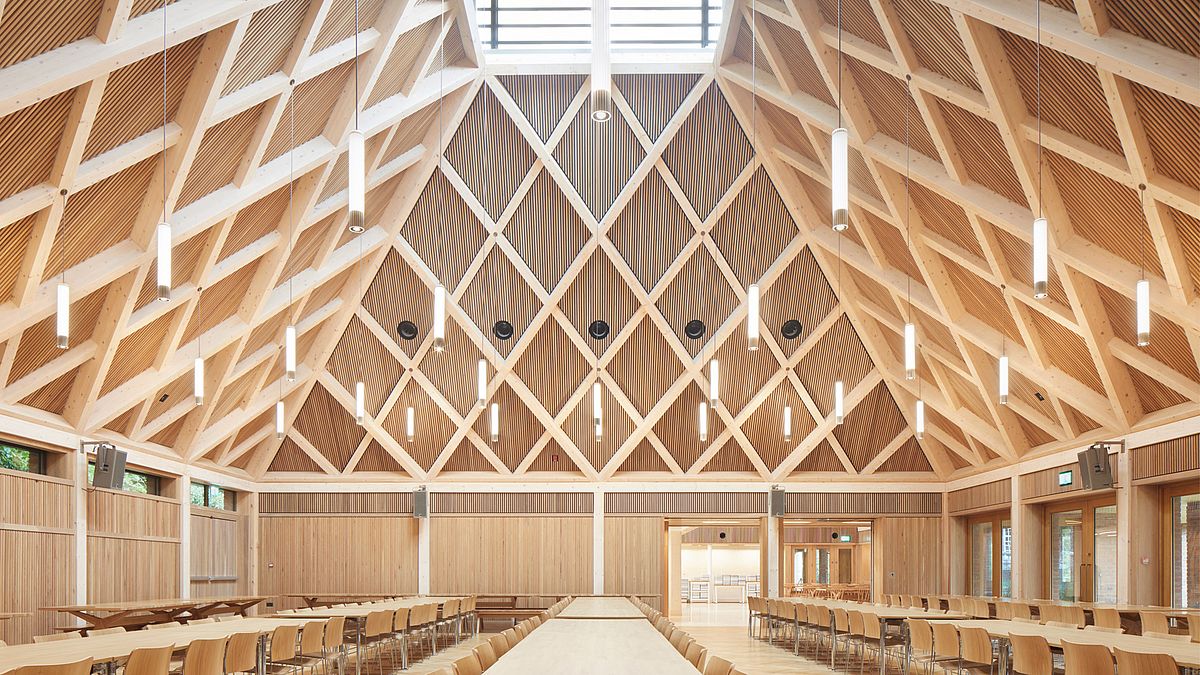Wood: A Most Remarkable Thing

This month’s column is about that incredible material we call wood. It’s impossible to cover much in a single column, so this will be the first of several about wood: what it is, how it acts, some of the things we do with it, and some of the things we might do with it.
You know what wood is, right? A technical definition isn’t any fun at all – “hard, fibrous tissue that comprises the major part of stems, branches and roots of trees and shrubs belonging to the plant groups known as the gymnosperms and the dicotyledonous angiosperms”.
In a remarkable 1949 book titled “The Coming Age of Wood,” Egon Glesinger writes of “The Big Three of Wood” – its universality, its abundance, and its inexhaustibility. Universal because societies of all types use it, abundant in the sense that forests cover huge parts of the earth’s surface, and inexhaustible in that it is renewable. All are, of course, dependent on us and how we behave. Some of the things that wood is used for change over time, some remain remarkably consistent (e.g., building and fuel); the sheer extent of forests has shrunk over millennia, and is further threatened today; and maintaining renewability requires that we not harm the ability of the land to produce.
Glesinger was an early staff member of the Food and Agriculture Organization (FAO) of the United Nations. Without framing it this way, Glesinger focused on the “provisioning services” of the forest. The “ecosystem services” framework of the modern FAO recognizes “supporting,” “regulating,” and “cultural” services, as well as “provisioning.” Examples of each:
- Provisioning – raw materials, food, water, medicinals
- Supporting – habitat for species, gene pool diversity
- Regulating – carbon sequestration, water flow regulation, pollination, erosion control, local climate influence, moderation of extreme environmental events
- Cultural – recreation, physical health, mental well-being, spiritual experience, sense of place
The natural, biologically diverse woodlands of Massachusetts can and do provide these things, all of which are essential. Some functions may be more important in particular spots, but almost all of these services can come from almost all of the acreage simultaneously.
Some argue that “provisioning” should be de-emphasized in favor of other services. I think that this is neither necessary, nor justified. Like it or not, we are all prodigious users and consumers of wood fiber. With a population of about 6.5 million people, Massachusetts citizens use annually 2.5 times the amount of wood that is grown in all Massachusetts forests annually. Pretending that “provisioning services” don’t matter just won’t work.
To keep forests as forests, most owners need some periodic source of revenue to at least cover ongoing costs. Sale of timber is still the most reliable and consistent source of revenue. Other ecosystem services markets exist and are being developed – water, carbon, non-timber specialty products, fee-based recreation – but none currently comes close to rivaling the well-established markets for wood and timber.
Wood harvest also enables non-provisioning services. Creation of vertical and horizontal diversity across the landscape is vital to habitat diversity, biodiversity in general, and maintaining the most productive long-term balance between carbon sequestration and carbon storage.
On a lifecycle basis, and in terms of embodied energy, wood usually compares favorably to non-renewable alternatives. In service, many wood products store carbon for decades or centuries, and help make indoor environments comfortable and attractive - physically, visually and psychologically.
Homework
- Pick a room, any room, in your place of residence. Set up a three-column list. In column one, try to list everything in and of that room that contains wood.
- In column 2, note whether the wood is or could be from a species that grows here – if you can.
- In column 3, write down what other material might be used to provide that item if it weren’t wood.
When you’re done, I know two things that will be true:
- A lot of the items in the room will be on the list, including the room itself;
- You won’t have identified everything with wood in it. (A lot is not visible.)
4. Think about it.
Next time: Properties of wood & where does all that wood go?
Charlie Thompson is a retired forester, member of the original board of Mount Grace, current board member of the MA Forest Alliance, co-author of Working with your Woodland and More than a Woodlot. He is a woodlot owner in MA and VT.
